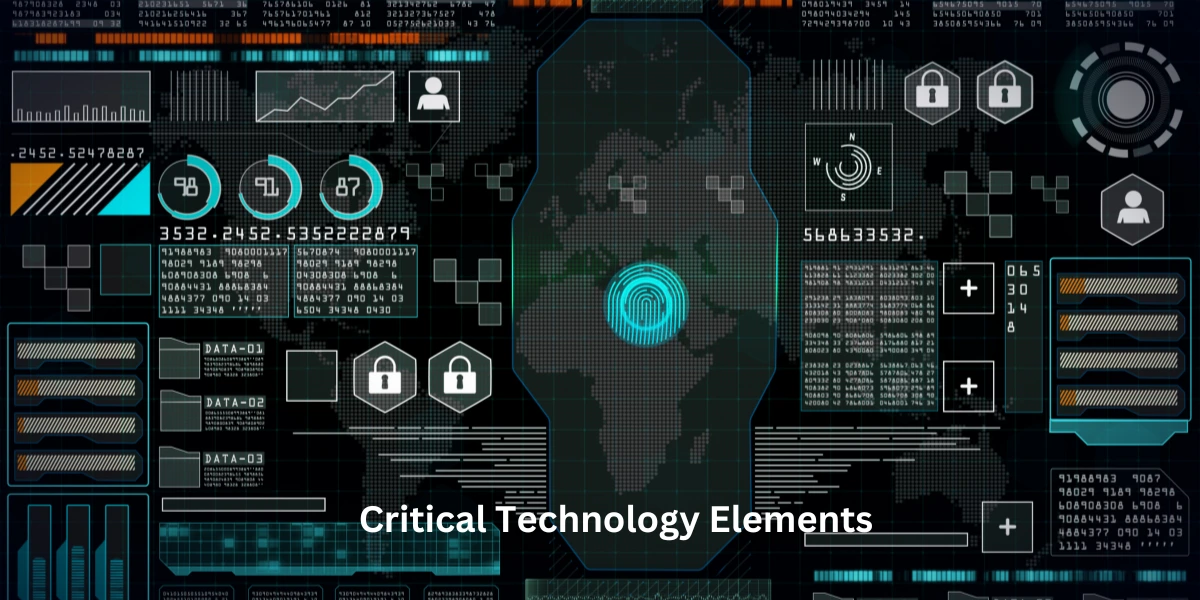
Critical Technology Elements: A Guide to Industry Transformation
Table of Contents
Table Of Content
- Introduction to Critical Technology Elements
- Significance of Critical Technology Elements in Industries Today
- Classification of Critical Technology Elements
- Core vs. Enabling Technologies
- Industry-Specific Examples
- Interdisciplinary Technologies
- Identification and Prioritizing Critical Technology Elements
- Criteria for determining critical technology elements
- Tools and methodologies in assessment
- Application of Critical Technology Elements in Various Sectors
- Aerospace and Defense
- Healthcare and Biotechnology
- Energy Industry
- Information and Communication Technology
- Manufacturing and Robotics
- Barriers to Development and Adoption of Critical Technology Elements
- Technical Barriers
- Financial and Resource Constraints
- Regulatory and Ethical Issues
- Workforce and Skill Gaps
- Market Acceptance
- Innovations for the Effective Inculcation of Critical Technology Elements
- Collaboration with Stakeholders
- Research Talent Investment
- Agile Frameworks for Rollout
- Conclusion: Shaping the Future with Critical Technology Elements
- Frequently Asked Questions (FAQs)
Introduction to Critical Technology Elements
Critical Technology Elements (CTEs) are technological innovations, systems, or components critical for gaining significant advancements in a particular field or for competing over long periods. These elements may initiate the creation of new products, processes, or services that form the backbone of industry-specific innovations and solutions.
Significance of Critical Technology Elements in Industries Today
CTEs define industries by:
- Enabling innovation: Creating novel solutions.
- Efficiency: Boosting productivity while keeping operational costs low.
- Competitiveness Drive: Providing a technological advantage in global markets
- Sustainability Attested: Allowing environmentally friendly developments for ecological causes.
Classification of Critical Technology Elements
Core vs. Enabling Technologies
Core Technologies: Enabling the core capabilities of a system (eg, processors in computers).
Enabling Technologies: Platforms that unlock significant development and increase capabilities (eg, AI in decision-making). Core and Enabling Technologies
Industry-Specific Examples
- Aerospace: Avionics advances, stealth technology.
- Healthcare: Precision medicine, imaging systems.
- Energy: Solar cells, smart grids.
- IT: Quantum computing, cybersecurity.
- Manufacturing: 3D printing, robotics.
Interdisciplinary Technologies
Some CTEs cut across more than one industry, for example, artificial intelligence, applied health and life science, finance, and manufacturing.
Identification and Prioritizing Critical Technology Elements
Criteria for determining critical technology elements
- Performance Impact: Technologies that will make a difference for the desired outcomes.
- Feasibility: Technical maturity and likely success.
- Strategic Value: Contribution to competitiveness and innovation.
- Cost Effectiveness: With which the investment price matches the value the organization can expect to create.
Tools and methodologies in assessment
- Technology Readiness Levels (TRLs): Technology maturity measured, from concept to deployment.
- SWOT Analysis: A process for decision-making that evaluates strength, weaknesses, opportunities, and threats.
- Expert Panels and forecasting: specialist insights for fact-based decision support.
These methods ensure the technologies with the highest impact and growth potential are identified.
Application of Critical Technology Elements in Various Sectors
- Aerospace and Defense
- Healthcare and Biotechnology
- Energy Industry
- Information and Communication Technology
- Manufacturing and Robotics
Aerospace and Defense
- Avionics and Navigation: High-tech systems for precision and safety.
- Stealth Technology: Improves the defense system.
- Space Exploration: Propulsion systems and materials engineering.
Healthcare and Biotechnology
- Genomics and Gene Editing: Enables personalized medicine.
- Diagnostic Imaging: Improves early detection of disease.
- Wearable Health Tech: Monitors real-time data for patients.
Energy Industry
- Renewable Energy Systems: Solar panels, wind turbines, smart grids.
- Energy Storage: Battery innovations for grid stability and electric vehicles.
Information and Communication Technology
- AI and Machine Learning: Driving automation and data analytics.
- Quantum Computing: Revolutionary problem-solving capabilities.
- Cybersecurity: Safety of sensitive systems and data.
Manufacturing and Robotics
- Additive Manufacturing (3D Printing): Low cost with the capability to personalize.
- Industrial Automation: Higher efficiency and precision in manufacturing.
CTEs form the core and mold these sectors and create new opportunities.
Barriers to Development and Adoption of Critical Technology Elements
- Technical Barriers
- Financial and Resource Constraints
- Regulatory and Ethical Issues
- Workforce and Skill Gaps
- Market Acceptance
Technical Barriers
- Complexity: Scientific and engineering problems that are often quite complex to solve while developing CTEs
- Integration Issues: There may be an incompatibility with existing systems and processes.
Financial and Resource Constraints
- High Development Costs: The development of R&D and infrastructure is quite expensive.
- Limited Funding Access: This generally holds true for startups or underfunded sectors.
Regulatory and Ethical Issues
- Compliance Requirements: Following strict industry standards and regulations.
- Ethical Impact: A balance between novelty and impact on society (e.g., AI and privacy).
Workforce and Skill Gaps
- Expertise Lack: Lack of sufficient trained professionals in new fields.
- Training Needs: Must continuously be upgraded to manage the new technologies.
Market Acceptance
- Resistance to Change: Firm and human resistance to new technologies.
- Infrastructure Readiness: Availability of supporting systems.
All these need careful planning, investment, and consensus.
Innovations for the Effective Inculcation of Critical Technology Elements
- Collaboration with Stakeholders
- Research Telent Investment
- Agile Frameworks for Rollout
Collaboration with Stakeholders
- Industry Partnerships: Facilitate business-to-business, government-to-business, and government-to-institute interactions to foster mutual knowledge sharing and resource exchange.
- Public-Private Partnerships: Involve grants and policy advocacy to scale critical technologies.
Research Talent Investment
- R&D Grants: Supporting research and innovation activities in emerging technologies
- Skill Building: Investment in talent development via training programs to build a skilled workforce to run and innovate with new technologies
Agile Frameworks for Rollout
- Iterative Implementation: Be adaptive, and incrementally adopt new technologies, hence responding flexibly to any change.
- Pilot Programs: Several pilot programs testing technologies in controlled environments before scale deployment to minimize potential risks.
The strategies described above ensure that appropriate critical technologies are appropriately developed, deployed, and adopted.
Conclusion: Shaping the Future with Critical Technology Elements
Critical Technology Elements drive Innovation, Competitiveness, and New Opportunity Drivers for Multiple Industries.
Technical barriers of development costs and other regulations pose challenges in this process but are being constantly addressed through strategic investments, collaboration, and responsible practices. The full realization of CTEs will shape a future of innovation, efficiency, and resilience.
Read Also: What Apps to Allow Full Disk Access: A Complete Guide
Frequently Asked Questions (FAQs)
Key components or breakthroughs needed for advancement in a given field or sector are critical elements.
Important technologies necessary to gain significant advances or remain competitive in different areas.
Core parts like tools, machines, processes, or systems applied toward the solution of problems or satisfaction of needs.





